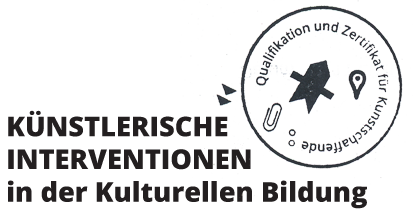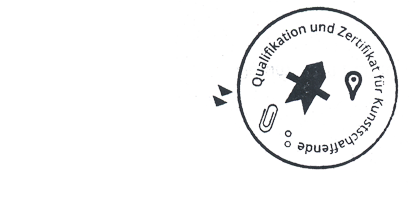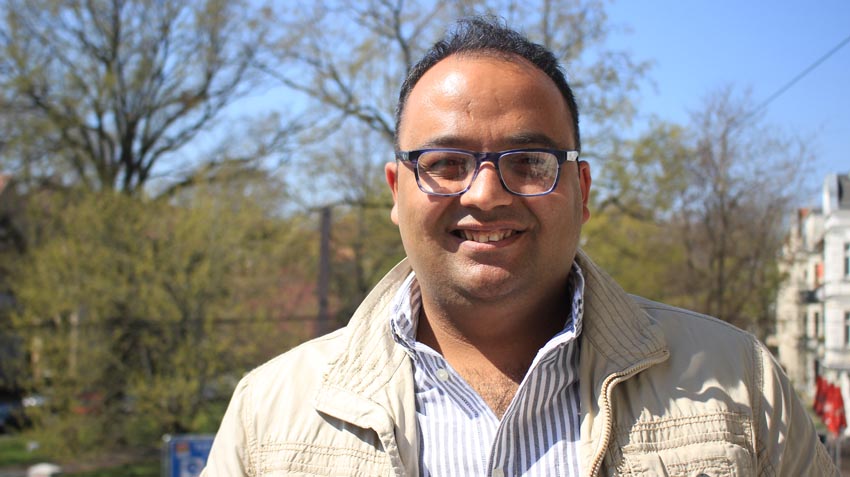



Ammar Awaniy was born in the Syrian city of Homs in 1993. Having graduated from higher secondary education, he studied automation control and computer engineering in Homs, completing his studies with a Bachelor degree in 2015. In the same year, he fled to Germany, and has since been living in Magdeburg. He picked up the German language very quickly, and today, he writes and reads stories and novels, and also likes historical literature featuring Saxony-Anhalt. In addition to being an author, he actively engages in cross-media projects of the Magdeburg-Stendal University of Applied Sciences and the “Offener Kanal Magdeburg”. Furthermore, he is a Project Consultant for Literature and Intercultural Affairs at the Institute for Caucasia, Tataria and Turkestan Studies, reg. Ass. (ICATAT e. V.) and a Project Assistant at the “.lkj) – Landesvereinigung kulturelle Kinder- und Jugendbildung Sachsen-Anhalt e. V.”.
Tracing one’s own tracks – creating new worlds

Referring to Saxony-Anhalt’s long history of migration and integration, youths got together to develop four project pillars in transcultural cross-media education workshops. Each of these pillars related to a concrete project, one of which was my first book. Together with poets, layout designers, illustrators and publishers, .lkj) Sachsen-Anhalt and ICATAT e. V., the book “Die Fackel der Angst. Von Homs nach Magdeburg” (the torch of fear – from Homs to Magdeburg) was created, which I have been focusing on in workshops and readings since it was published.
The project was backed by its own blog, so that the youths were able to blog their own artistic results.
https://eigene-spuren-suchen.jimdofree.com
What have you taken home from this project for your artistic activities?
This experience made me more aware of the role which art in general has in developing young people’s personalities. Art and literature help them freely express their opinion and work together to achieve the goals they have set themselves. As an author, I have developed my own view on arts education. My book project won’t be over when the book is published, for that is only the beginning of a journey which then goes on through discussions, workshops and creative thought.
Which topic turns up again and again in your artistic activities?
Since coming to Germany I have developed an interested in intercultural history between the Orient and Central Germany. Through multi-media cooperation and by using various cultural education methods, I am attempting to illustrate the diversity of Magdeburg and turn the “enemy stereotype of the other” into a stable bridge between long-time residents and new inhabitants. These efforts have already been put into practice in a number of projects. In this respect, the book project “Der Pascha von Magdeburg” (the Magdeburg pasha) is a very good example of such successful intercultural activity.
What do you seek to achieve with your arts education activities?
I would like to create new perspectives for cooperation, engage in an active sharing of information, views on life and targets, integrate new arts education methods in my project activities and pass on the insights which I have acquired, so that they have a lasting impact. I want to more actively strengthen the role of youth clubs in rural areas through regionally based intercultural activities and establish scope for creativity in which young people can develop their own talent in a multilingual and interdisciplinary framework.
What, in your view, is the essence of an artistic intervention in arts education?
To me, strengthening the role of art in the context of arts education appears to be an important aspect because this enables the formation of a creative environment which children and youths need to develop and consolidate their own personality in a special manner. For example, integrating music and drama can encourage the participants to expand their artistic and intercultural abilities and can get them out of what might be a bubble of exclusivity and into the group. With these creative means, they learn how to work together with others and contribute their individual skills to the collective effort.